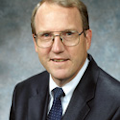A surge in rail delivery of crude oil and oil products in the US last year reflects, in part, a textbook system of price leapfrog, known more formally as location arbitrage.
Although oil is far more expensive to move by railcar than by pipeline, tracks connect more places than pipes do.
So when production surges somewhere not fully served by pipelines, such as the Bakken play in North Dakota, oil finds its way into tank cars.
The Energy Information Administration reports Association of American Railroads data showing last year's rail delivery of crude and oil products exceeded the prior year's total by 46%. Crude shipments dominated the increase, most of which reflected developments inside US borders. In the latter half of the year, though, rail shipments from Canada began increasing in a trend likely to continue at least awhile.
That's the price leapfrog.
Existing pipeline capacity remains sufficient to carry the growing amounts of synthetic crude oil and blended bitumen produced in Alberta. But most incremental volumes are priced against West Texas Intermediate crude at Cushing, Okla.
For producers of Canadian heavy oil, that's a problem. Diluted bitumen (dilbit) sells at a discount to WTI at Cushing.
That's not the case on the Gulf Coast, where demand for heavy feedstock in high-conversion refineries can make the value of dilbit higher than that of WTI.
To capture some of the premium, several Canadian producers have developed rail-based transport schemes enabling them to sell on the Gulf Coast or at terminals reflecting Gulf Coast values. In some cases, the oil moves by rail all the way south. In others, it moves part of the way by rail and the rest by river barge or pipeline.
Helping rail economics is the need to blend bitumen with about a third less diluent, which costs more than crude, than pipelines require.
This scheme depends on a price differential that won't last forever. But it classically shows how markets orient physical mechanisms to value.
About the Author

Bob Tippee
Editor
Bob Tippee has been chief editor of Oil & Gas Journal since January 1999 and a member of the Journal staff since October 1977. Before joining the magazine, he worked as a reporter at the Tulsa World and served for four years as an officer in the US Air Force. A native of St. Louis, he holds a degree in journalism from the University of Tulsa.